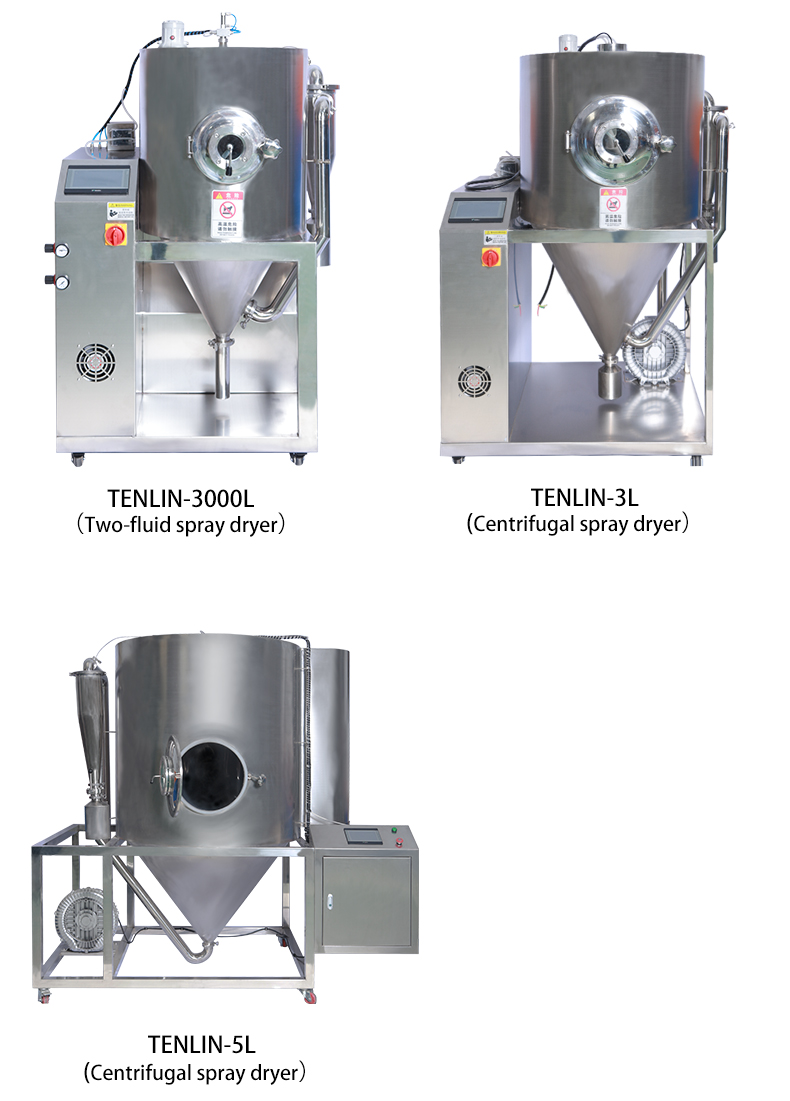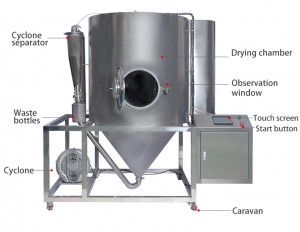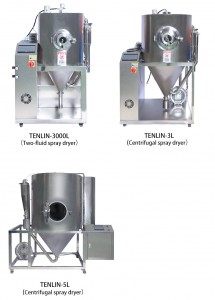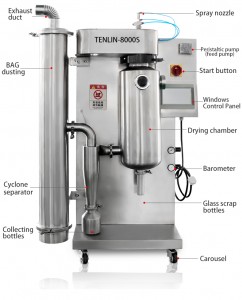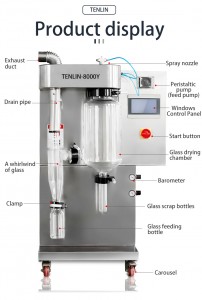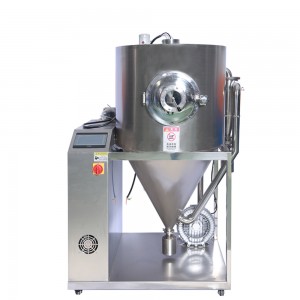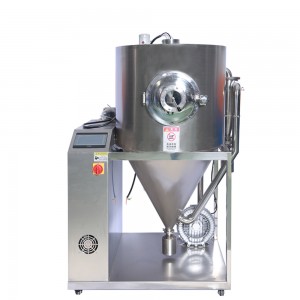
Products
Small Size Laboratory Centrifugal Spray Dryer Machine
Introduction: The machine works by passing air through a filter and heating device before entering a hot air distributor at the top of the drying chamber. The hot air is evenly distributed within the chamber and rotates in a spiral pattern, simultaneously delivering the liquid material to a centrifugal spray head located at the top of the chamber. The liquid material is atomized into fine droplets, significantly increasing the surface area of contact between the liquid material and the hot air, causing rapid evaporation of moisture and drying the finished product in a very short time. Coarser pieces of the finished product are collected in a collection cylinder at the bottom of the dryer, and exhaust gas is discharged by a centrifugal fan.
Specific applications include: Beverages, flavorings and pigments, milk and egg products, plant and vegetable extracts, pharmaceutical synthesis, heat-sensitive plastics, polymers and resins, fragrances, blood products, ceramics and superconductors, biochemical products, dyes, soaps and detergents, food adhesives, oxides, bone meal and tooth powder, and more.
Key Features of the Small Spray Dryer:
The drying speed is rapid. After being centrifugally sprayed, the surface area of the liquid material increases significantly. In the high-temperature airflow, 95-98% of the moisture can be evaporated instantly, and the drying process can be completed in just over ten seconds.
The co-flow spray drying method ensures that the temperature of the droplets remains low during the drying process, resulting in high product quality. Inside the spray drying chamber, the droplets flow in the same direction as the hot air. Although the hot air temperature is relatively high, the chamber temperature drops rapidly due to the immediate contact between the hot air and the spray droplets upon entering the drying chamber, preventing overheating of the material. This method is suitable for drying heat-sensitive materials. The temperature of the discharged product depends on the exhaust air temperature and is lower than the exhaust air temperature.
The production process is simplified, and operation and control are convenient. Spray drying is typically used for solvents with a moisture content of 40-60%. Even special materials with a moisture content as high as 90% can be dried into powder products in one step. Most products do not require further crushing and screening after drying, reducing production steps, simplifying the production process, and improving product purity. The particle size, precision, and moisture content of the product can be adjusted by changing operating conditions within a certain range, making control and management very convenient.
